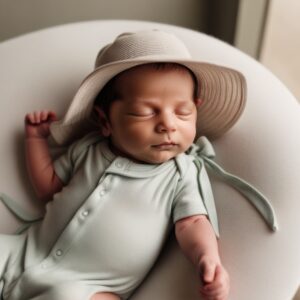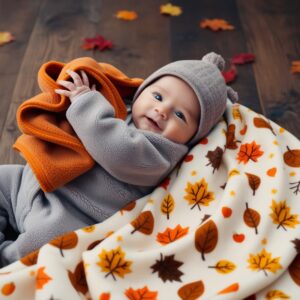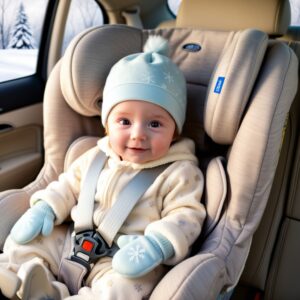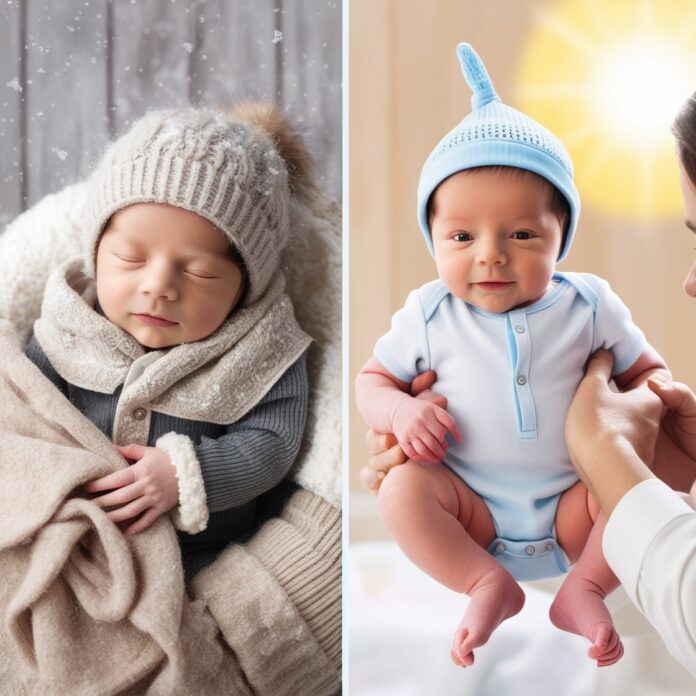Bringing a new member into the family is an interesting process but it also means a myriad of tasks. Teaching your baby how to dress well on a season-by-season basis is a major part of the responsibilities of a new parent. Dressing the infant is not just about looks, but more about making sure they are comfortable, warm, and dry, no matter what the weather is outside.
Every season has its own peculiarities and requirements. From sweltering summer to the freezing winter, you have to be able to put your baby in clothes that are appropriate for the ambient temperature, keep him/her warm, and also do not cause him/her to sweat or get cold. This post will cover all the right questions and the wrong ones that you might wonder about, be it for summer or winter or whatever, to help you figure out how to have a properly dressed baby.
Autumn: Light Clothes and Safe from the Elements
Fall is the sort of period in the year that when it comes to dressing your baby, you have to care for the temperature of the room and the time when it is not the hottest. Throwing together the outfit for your child is a delicate task because you are not only considering the temperature but also the fact that the weather can get very unpredictable.
Do’s
- Put On Multiple Layers: Take several layers into account while clothing your baby in spring. It’s suggested to use soft fabrics such as cotton to make the base layer and let a small jacket or a sweater be an extra layer if needed.
- Guard your child from the sun: You shouldn’t forget that kids even need protection from the sun. A simple but appropriate hat is one of the solutions that avoids sunburn for the baby’s face and neck.
- Keep Them Dry: The truth is that spring might turn into a rainy season so you must always make sure that your little one’s clothing is not only moisture-wicking but also dry in order to prevent him/her from catching a cold.
Don’ts
- Overdress: Do remember not to overburden your child with clothes as it can result in perspiration. Stick to breathable layers and use a light blanket or muslin swaddle for added comfort.
- Forget the Umbrella: A small umbrella or raincoat should always be in your possession if it’s merely drizzling outside. Wet clothes may bring about an unpleasant sensation and even diseases.

Summer: Keeping Baby Cool and Comfortable
Summer is the time when the temperature is high that results in baby overheating. Baby’s attire in summer needs the right kind of materials, air passage, and the special care of the newborn from the parent/guardian.
Do’s
- Dress Light and Breathable: Go for garments that are made from light and airy fabrics like cotton and linen that also promote adequate ventilation. A onesie or a romper with a lightweight fabric is a perfect choice for a hot summer day.
- Keep Baby Hydrated: Although a newborn cannot drink water, do not ignore the fact they still should suck breastmilk or, in the case of being formula-fed, be given it frequently and in small doses to remain hydrated.
- Use Hats for Shade: A sun hat has a wide brim that gives excellent shade and also covers the baby’s sensitive skin. A baby bonnet being soft in nature can be a good way for your little one to protect themselves from the sun.
Don’ts
- Avoid Overdressing: While a single garment suit might very well be charming, it still can be too much during scorching weather. Keep it minimal and avoid layers.
- Let Baby Stay in Direct Sun: It is not okay to expose your baby to the sun directly for a long time. Even if your baby is wearing a hat and some sunscreen, the ideal spot is still a shaded area which prevents the baby’s fragile skin from being harmed.

Fall: Snug but Not Hot
Fall is a season that boasts of chilly weather, cuddly details and the comfortable atmosphere – and this whole matter applies also to your baby. On the downside, it also needs smart planning.
Do’s
- Select Breathable, Warm and Comfortable Attire: Cotton blends or fleece made of soft material are suitable during fall. These will help your baby feel toasty, but not too warm.
- Dress in Layers: More clothes will certainly be needed for fall seasons. The first layer underneath, such as a light sweater, will be fine in most cases.
- Wrap Your Baby Up: Go for a thin blanket or a quilt and cover the baby’s stroller when you take the baby out for a walk to ensure they stay active, yet comfortable.
Don’ts
- Overheat Baby: Overdressing is a common mistake that parents make in the chilly autumn; it is better to dress your baby in a fewer number of layers and light clothing, particularly if you are indoors.
- Dress Heavy Baby for Indoor: Wear the baby light clothes that are made of breathable materials and have a comfortable texture, so the baby will stay comfortable and warm will safe indoors. The clothes should also be easy to remove in case the child gets warm.

Winter: How to Keep Baby Uncomfortably Warm
It’s quite a challenge having to dress your baby during the winter season. It’s very important to keep him/her warm and at the same time allow him/her to move freely.
Do’s
- Dress Your Baby in Lots of Warm Layers: A piece like a warm onesie, footed pajamas, a jacket, and a snowsuit will keep the baby warm during the winter months. Go for wool and fleece, which can provide warmth, but not the type of bulk that makes it difficult for the child to move.
- Place a Car Seat Cover: Whenever a car seat is carrying an infant, a car seat cover designed for the winter should be used. Don’t use thick jackets or snowsuits as it may lead to the harness system not operating properly.
- Cover Extremities: Make sure your baby’s hands, feet, and head are well-covered with mittens, socks, and a tightly knit hat. If the extremities are cold, there could be discomfort or even possible health problems.
Don’ts
- Avoid Excessive Layering: Do not pile up your baby with too many clothes at the same time, as this may cause sweating and hence discomfort. Maintain an equilibrium in the warmth you provide.
- Not Together: Even though it is freezing outside, you should not turn a blind eye to the room atmosphere. It is better to put a baby in layers, and at the same time, ensure the room is warm but not too much that the baby has to overwear.

Irrespective of the time of the year, the primary step to baby clothing is to have a balanced combination of warmth, comfort, and safety. Furthermore, the complete awareness of the climate plus your child’s feelings is also crucial. Additionally, regular checks of baby’s body temperature can be helpful in order to prevent them from either overheating or getting too cold. The above basic tips will help you realize your purpose of dressing a newborn in every weather condition efficiently.



